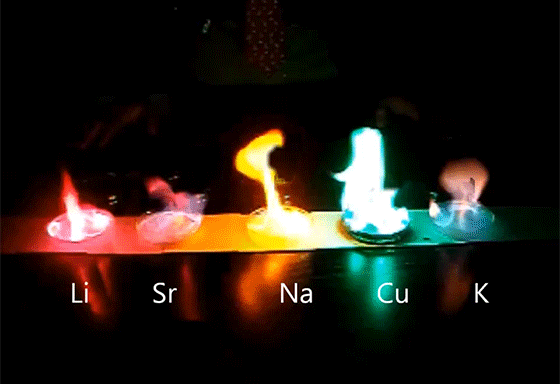Ligt and Color: Why Do Objects Have Color?
Have you ever wondered where the light comes from? Or why are the surrounding objects colored? In my opinion it is quite clear. Daylight comes from the sun and other artificial sources, and at night from lamps and moonlight. By the way, the moonlight is actually also sunny, only reflected from the surface of the Moon. And if we received this knowledge in primary school, then to answer the question - why the surrounding world is color and not black and white, we will have to learn more about the Sun.
After all, just some two hundred years ago, the only thing that we reliably knew about sunlight, is that it can be decomposed into seven colors. In nature, we are reminded of this by a rainbow, which arises from the refraction of light in ice crystals in the atmosphere. By the way, if you did not know, the rainbow is not only arcuate, but for example vertical, although it is more difficult to notice such a rainbow, because it is much paler than usual.

However, the nature of the appearance of the rainbow became the most understandable, only when it was recreated in the laboratory. In 1672, Isaac Newton was able to prove that the usual white sunshine is a mixture of rays of different colors: "I darkened my room"- he wrote - "and made a very small hole in the shutter to let in sunlight."

The sun beam is divided into the color spectrum
On the path of the solar ray, the scientist placed a special three-sided glass - a prism. On the opposite wall, he saw a multicolored strip, which he later called the spectrum. Newton explained this by the fact that the prism decomposed the white light into its constituent colors. Then, on the way of a multicolored beam, he put another prism. This scientist re-collected all the colors in one ordinary sunbeam.
Thanks to this experience, mankind managed to find out that white light, when passing through a triangular prism, decomposes into seven colors. And the prism for centuries has become the main instrument of the study of light. However, until the beginning of the XIX century, serious progress was not made in the study of light. Partly because the optical instruments were of low quality, and partly because the scientists of the then scientists had no special questions about the light.

Approximately in the first quarter of the 19th century, German optician and physicist Josef Fraunhofer was seriously involved in the light. Observing the solar spectrum, he found on it dark lines, later named his name-fraunhofer lines. To explain their origin at that time did not succeed (they were only able to explain their origin half a century later). But nevertheless this discovery was not useless and Fraunhofer could find its practical application: since the dark lines were constant, it was very easy to calibrate and adjust the optics for them.
The next step that brought us closer to understanding what sunlight is is a new technique that later became known as - spectroscopy. It is generally believed that the founder of this technique is the professor of chemistry Robert Bunsen, who was widely known for the fact that unlike other chemists he not only mixed reagents, but also burned them in a gas burner, and at very high temperatures.
During one of his experiments, he noticed that different substances glow in the flame of the burner in different colors. However, if there were a lot of substances in Bunsen, then there are very few words suitable for describing their colors. But to his happiness he came to the aid of the physicist Kirchhoff. He suggested collecting light from the burner in a bundle and letting it through the prism. Taking a prism, a box of cigars and halves of a telescope, he made the world's first spectroscope.
![]()
In this way, in 1958, the definition of flowers finally acquired mathematical precision. And the excitement that began in chemistry, in connection with the discovery of spectroscopy can be compared to a gold rush. For several years, chemists began to burn everything that is possible, meticulously documenting the spectra. Thanks to these experiments, chemists managed to open two new chemical elements: rubidium and cesium (in Latin, dark red and blue respectively).

The Process of Color Burning of Different Chemical Elements
Now you probably guess why each of the chemical elements in Medleyev's periodic table has its own color?
In parallel, scientists have discovered that light of a certain color is not only not only being studied, but also strictly absorbed. This explains the Fraunhofer lines: light is absorbed by substances present on the Sun. By the way, modern equipment makes it possible to distinguish about 26,000 such lines, and until now not all of them have been identified.
And ten years later - in 1868 the astronomer Jean-Sen made a very simple thing from our point of view - he guided the spectroscope to the edge of the sun. And the spectroscope instead of the whole solar spectrum showed only a few lines. Three of them belonged to hydrogen, well studied at the time, and one was unknown.
The substance giving this line was called helium (from Latin helium - the term invented in 1868 on the basis of the Greek "ἥλιος" - "sun"), that is, solar. To find this helium at that time, scientists and did not hope at all, because by that time it seemed that the lines of everything that was possible, from ordinary substances and reagents to rare minerals, had already been studied. However, helium on Earth still found, it really happened only after 27 years. The discovery of this chemical element subsequently brought humanity closer to the discovery of radioactivity.
So it turns out that our whole world, all the light sources, all our environment in which we live consists of different chemical elements, each of which is painted in its color due to the sun's rays. Thanks to the sunlight, a great number of other useful discoveries were made, but I will tell about this another time. See you next Time :)
As requested I have voted for you! 🎁 To call me just write @contentvoter in a comment.
Awesome post! Keep making content, I love to see the growing base of science writers on here.
You embarrassed me @ngans :) After all, I did not invent any laws and did not make any discoveries. I really love science, but usually it is presented with boring or uninteresting. And I'm just trying to convey to the reader the whole point, do not break the meaning, and of course make the text enjoyable for reading :)
Resteemed your article. This article was resteemed because you are part of the New Steemians project. You can learn more about it here: https://steemit.com/introduceyourself/@gaman/new-steemians-project-launch
I am very pleased thank you :)
Congratulations! This post has been upvoted from the communal account, @minnowsupport, by floxxy from the Minnow Support Project. It's a witness project run by aggroed, ausbitbank, teamsteem, theprophet0, someguy123, neoxian, followbtcnews, and netuoso. The goal is to help Steemit grow by supporting Minnows. Please find us at the Peace, Abundance, and Liberty Network (PALnet) Discord Channel. It's a completely public and open space to all members of the Steemit community who voluntarily choose to be there.
If you would like to delegate to the Minnow Support Project you can do so by clicking on the following links: 50SP, 100SP, 250SP, 500SP, 1000SP, 5000SP.
Be sure to leave at least 50SP undelegated on your account.
Your Post Has Been Featured on @Resteemable!
Feature any Steemit post using resteemit.com!
How It Works:
1. Take Any Steemit URL
2. Erase
https://3. Type
reGet Featured Instantly – Featured Posts are voted every 2.4hrs
Join the Curation Team Here | Vote Resteemable for Witness